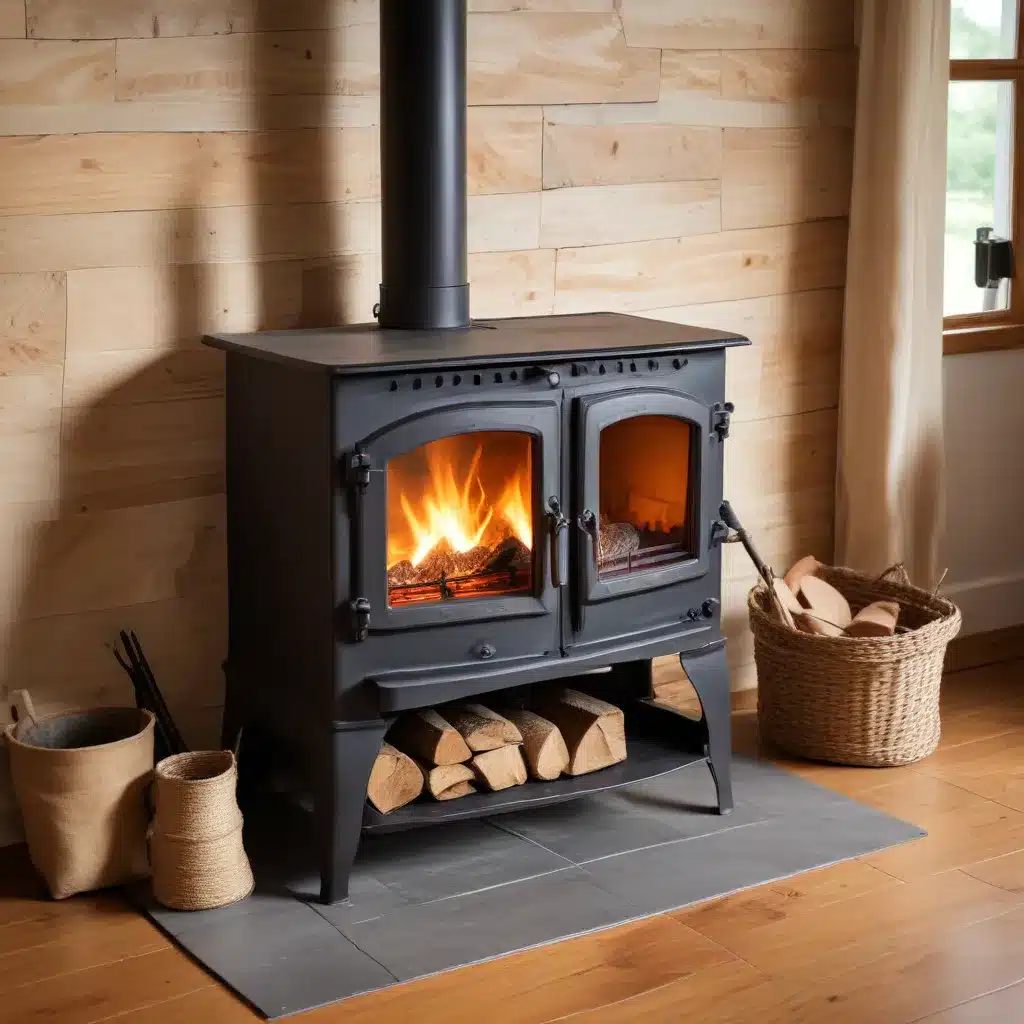
As a seasoned expert in wood stoves and heating solutions, I’m excited to share practical tips and in-depth insights to help you extend the lifespan of your wood stove through DIY maintenance. Whether you’re dealing with an older model or looking to optimize the efficiency of your current setup, these hacks will transform your wood-burning experience.
Slow Down the Exhaust and Improve Combustion
One of the primary factors that can shorten the lifespan of a wood stove is inefficient combustion. Many older models struggle with fast-burning fires that consume excessive fuel while generating excessive creosote buildup in the chimney. To address this, you can make a simple modification to slow down the exhaust gases and improve the overall combustion process.
Replacing the Throat Plate
The throat plate, also known as the baffle, plays a crucial role in regulating airflow and heat distribution within the firebox. In older wood stoves, these plates often become problematic, either by overheating and warping or getting easily knocked out of place when adding new logs.
To address this, consider replacing the solid throat plate with a perforated stainless steel tube. This tube should be sized to fit loosely on the existing brackets, allowing you to roll it back and forth to control the draw of the fire. By introducing this vortex-creating tube, you can retain more heat within the firebox, leading to a more complete and efficient combustion.
Tip: Remember to clean the perforated tube regularly to prevent carbon buildup and maintain optimal performance.
Adding a Secondary Air Intake
While the perforated tube can enhance gasification and heat retention, it doesn’t fully address the need for additional air to facilitate a cleaner burn. To introduce a secondary source of air, you’ll need to drill a hole in the side of the cast iron firebox and install a dedicated air intake system.
This can be achieved by using a 3/4-inch stainless steel pipe with a series of 90-degree elbows, a full-bore isolation valve, and other fittings. The key is to route the pipe into the upper chamber of the firebox, allowing the preheated air to mix with the smoke and gases released during the primary combustion process.
By implementing both the perforated tube and the secondary air intake, you’ll significantly enhance the efficiency and cleanliness of your wood stove’s burning, leading to substantial fuel savings and reduced creosote buildup in the chimney.
Maintain Your Wood Stove for Maximum Efficiency
Proper maintenance is essential for prolonging the lifespan of your wood stove and ensuring optimal performance. Here are some essential maintenance tasks to consider:
Regularly Clean the Chimney
Creosote buildup in the chimney is a common issue that can compromise the safety and efficiency of your wood stove. Make a habit of scheduling professional chimney sweeping services at least once a year, or more frequently if you notice excessive buildup.
Inspect and Replace Gaskets
Over time, the gaskets around the doors and other openings of your wood stove can become worn or damaged, leading to air leaks and reduced efficiency. Inspect these gaskets regularly and replace them as needed to maintain a tight seal.
Clean the Firebox and Ash Removal
Regularly cleaning the firebox and removing ash buildup can help improve airflow and combustion. Be sure to allow the stove to cool completely before attempting any cleaning or maintenance tasks.
Monitor and Adjust Air Intake
Closely monitor the air intake settings on your wood stove and make adjustments as needed to maintain optimal burning conditions. A well-tuned air intake can significantly improve efficiency and reduce fuel consumption.
Upgrade to a More Efficient Wood Stove Model
If your current wood stove is an older, less efficient model, it may be worth considering an upgrade to a newer, more advanced unit. Modern wood stoves often feature secondary combustion systems, improved insulation, and better air control mechanisms, which can lead to significant improvements in efficiency, cleanliness, and fuel savings.
When researching potential upgrades, pay close attention to the stove’s heating capacity, emissions ratings, and overall energy efficiency. Consult the experts at WoodStoveHeaters.com to explore the latest wood stove models and find the best fit for your heating needs.
Explore Supplemental Heating Options
While wood stoves can be an excellent primary heating source, incorporating supplemental heating solutions can further enhance your home’s energy efficiency and comfort. Consider options like:
- Space Heaters: Strategically placing electric space heaters in frequently used rooms can allow you to lower your wood stove’s thermostat setting, reducing overall fuel consumption.
- Electric Blankets: Staying cozy under an electric blanket can enable you to maintain a lower ambient temperature in your home.
- Ductless Mini-Splits: These efficient heating and cooling systems can provide targeted climate control, complementing your wood stove’s whole-home heating capabilities.
By combining wood stove maintenance, upgrades, and supplemental heating solutions, you can extend the lifespan of your wood stove, improve its performance, and achieve significant energy savings.
Embrace Renewable Energy for Long-Term Sustainability
For a more comprehensive, sustainable approach to home heating, consider incorporating renewable energy sources into your home’s overall heating strategy. Options like solar panels, geothermal heat pumps, or even small-scale wind turbines can help reduce your reliance on traditional fossil fuels and provide long-term cost savings.
While the upfront investment may be higher, renewable energy systems can offer substantial returns in the form of lower utility bills, increased energy independence, and a reduced environmental impact. Consult with local energy experts or visit the WoodStoveHeaters.com website to explore the renewable energy options best suited for your home and heating needs.
By implementing the DIY maintenance hacks, exploring efficient wood stove upgrades, and integrating supplemental and renewable heating solutions, you can breathe new life into your wood stove, enhance its performance, and enjoy substantial long-term energy savings. Remember, a well-maintained and optimized wood stove can be a reliable, cost-effective, and environmentally friendly heating solution for years to come.


